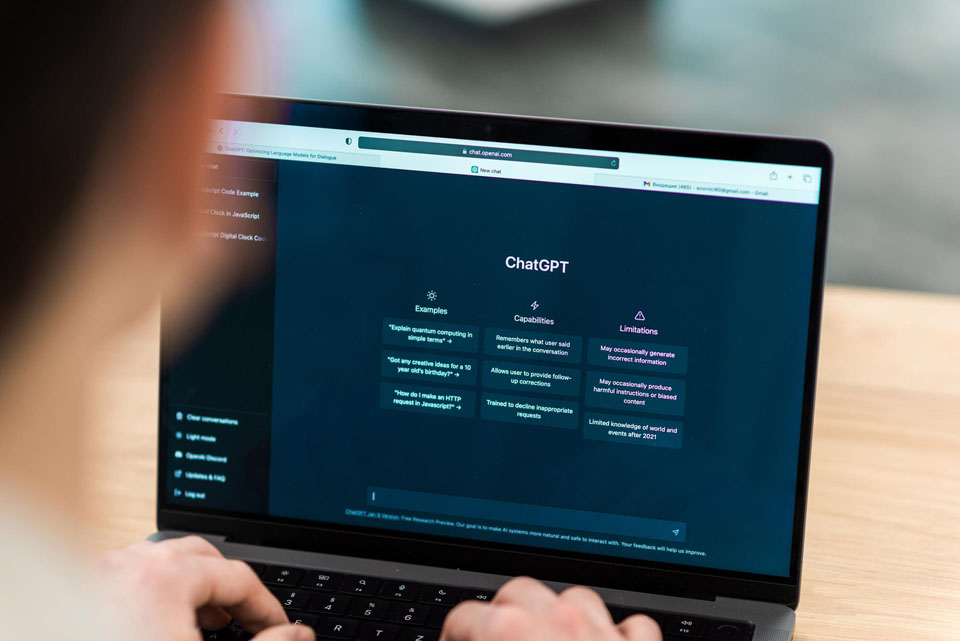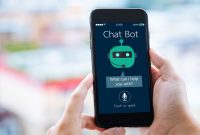Many companies use AI to save money on running costs, boost sales, improve customer experience, and increase productivity. Businesses should consider putting smart technologies such as machine learning, handling of natural languages, and several others into their processes and goods to get the most out of them. But even companies starting with AI can get a lot out of it.
What is ChatGPT?
OpenAI made ChatGPT, a big language model robot. It uses GPT-3.5 as a model. People use big language models to determine what word comes next in a string of words. Deep Reinforce to Human Feedback (RLHF) is an extra training layer that helps ChatGPT learn to follow orders and give comments people like. Now that you know how it works, let’s look at it.
ChatGPT is a large model of language created with GPT3 and GPT4. This AI app looks at a lot of text and applies machine learning to answer questions in a way that sounds like a real person. OpenAI says that reinforcement learning, transforming according to what people tell it, makes ChatGPT much better at what it can do.
The company uses human AI teachers to speak to the model and act as users and robots. Trainers determine how good ChatGPT’s comments are by comparing them to what individuals would answer. This shows ChatGPT how to converse like a human.
The Advantages of ChatGPT
- Costs nothing. Chat-GPT is free, and you don’t need a contract. Since it is still in the “incubation” stage, it may turn into a paid app.
- It can answer questions with smart, well-referenced replies.
- When something is custom, every answer is made to fit the person using it. The answers are given based on the questions that are asked. Answers come from many different places and are put together differently.
- Your answers to questions should make sense and be full. The robot was made to answer questions in a way that sounds like a person. Also, because it takes a standard view, it opens the door to many questions.
- It gives real-time information. Because answers aren’t just on a couple of pages, it takes less time to find them. It gives answers that are simple and short.
- They helped me solve problems and write essays. Students who need help with their homework or writing can use the robot. It can write articles and code at the college level.
- Availability. At any time, you can use the robot.
- Be careful how you put words together. The results can differ if the person changes just a bit about how they ask the question. If a person asks a question in a certain way, they may not get a response. But if they ask for it to be done another way, they will.
- When you ask a question that isn’t clear, it gives you likely answers based on what it thinks you want to know.
- It speeds up the brain and makes it less worried.
- A control API was added to the program so that the robot couldn’t be used to find information that could be damaging or risky. People can only ask questions about things that don’t hurt people or make them hurt other people. For example, a quick look at how to start making bombs didn’t give you everything you needed to know.
- It answers more questions than any other robot. Chat-GPT tries to give answers that are clear and well-written.
The Disadvantages of ChatGPT
- Some of the answers might not make sense or be based on facts. Most of the results from a search engine are based on articles and news stories from reliable sources. You can’t talk about ChatGPT over and over again.
- People with ideas take a chance. When it comes to ChatGPT, people with a lot of ideas are at a loss. Creative people come up with new ideas, but anyone can go to ChatGPT to get solutions to their problems. They can also write papers, do math, and easily study code.
- Less money and fewer jobs. If robots like ChatGPT are used too much, work will become less important, and the employment rate will decrease.
- ChatGPT and other robots sometimes give answers that seem right but are wrong or don’t make sense.
- Too much talk and too many words ChatGPT often uses too many specific words and goes on for longer than it needs to.
- More than one person can see the replies. If two people look for the same topic, they might use the same article. Personalization works if you don’t ask the same questions repeatedly.
- It doesn’t know what the words it comes up with mean. People might react in ways that have nothing to do with a message’s content if it’s unclear what it’s about or why it was sent.
- Like any other language model, it can’t be learned. So, even if the user’s situation changes, they might still get the same answer.
- Because it can make assumptions when asked vague questions, it may sometimes give answers that have nothing to do with the user’s questions.





